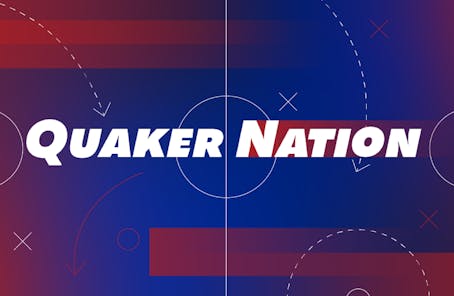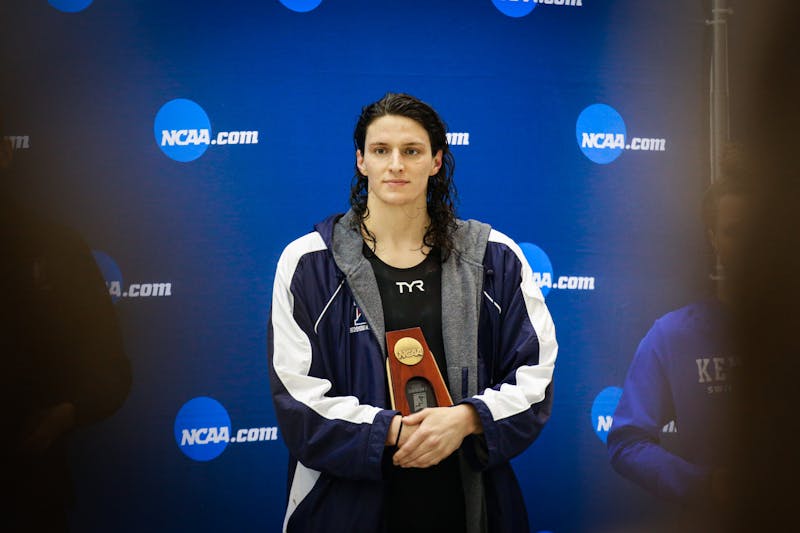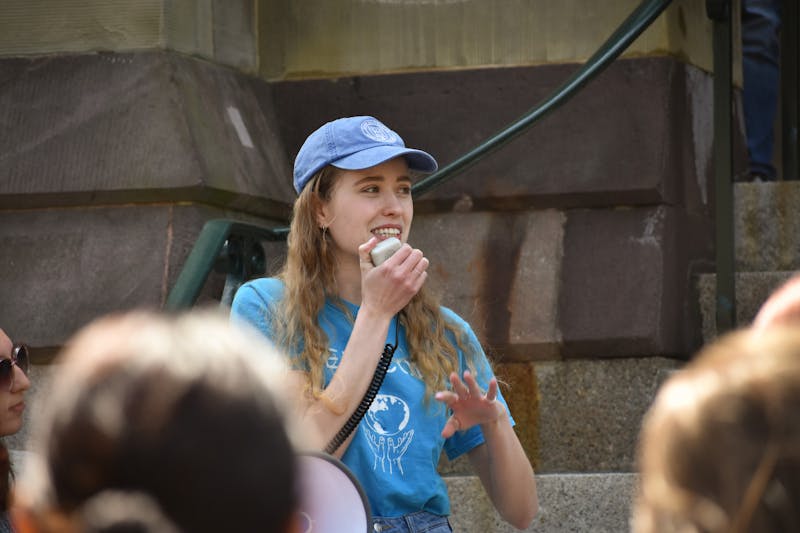
Down by one, with no time left on the clock, the women’s basketball team’s fate rested on one final free throw.
The whole squad stood off to the side chanting in unison, but fell silent as they waited for the high-arcing shot to finally land.
But to my dismay, the most important clutch free throw of my life clanged off the front of the rim. As punishment, coach Mike McLaughlin ordered us all to sprint two sidelines and then successfully repeat the simulation of late-game free throws before practice could end.
I have played basketball since I was eight years old but gave up my NBA dreams in elementary school, when my father lectured me on the basic principles of genetic inheritance.
Although I measure a meager five-foot-six and weigh only 125 pounds, I — like many guys I know — figured that I might at least be athletic enough to compete favorably in the arena of women’s sports.
Last Wednesday, the women’s basketball team was kind enough to allow me to test my mettle by participating in a full-length, two-and-a-half hour practice. My missed free throw concluded the session on a disappointing note, but one question still remained: had I shown enough potential to make the jump from the intramural ranks to women’s Division I?
“For your heart, certainly,” senior point guard Sarah Bucar said. “For talent? Not so much. Your shot’s good, you just have to work on your handle a little bit.”
Luckily for me, McLaughlin calls the shots, and I knew he was the best candidate to find a deeply veiled silver lining in my performance.
“We need to work on your conditioning a little bit,” McLaughlin said, “but I liked your being feisty and excited to be here, so you’re on the team.”
By my estimation, McLaughlin was, unsurprisingly, far too generous in his assessment. As the team ran through a standard practice that included simulated fast breaks, five consecutive full-court suicides and high-intensity drills that focused on footwork, ball security and pressure defense, I had to rest periodically to avoid vomiting into a trash can.
Stamina aside, I still held out hope that I could at least measure up to the girls in pure strength. That illusion was abruptly shattered during a boxout drill in which senior guard Caitlin Slover took less than a second to casually muscle me to the ground.
“These are well-conditioned athletes, as you can see,” said McLaughlin, who added that outsiders generally “underestimate” the physicality of women’s basketball.
The rigors of a full season can be mentally and physically exhausting, affecting life off the court as well.
After participating in just one practice, I labored to stay awake to complete my homework and found a new appreciation for what it takes to be a Penn student-athlete.
NCAA rules limit in-season practices and related activities to 20 hours per week, but the scheduled time spent preparing on the hardwood, building muscle in the weight room and dissecting film on Penn’s Gamebreaker software is only part of the story.
Unseen to the outside observer are the hidden hours spent receiving treatments in the training room or the 1:30 a.m. struggle to study on the bus mere hours after a hard-fought road loss. Slover and fellow senior Amy Donovan both estimated that the total time commitment can edge closer to 30 or 40 hours per week.
“I think it’s probably the equivalent of a full-time job,” Donovan said. “Sometimes, not that they underappreciate it, but a lot of times people are almost insensitive to it.”
In the Ivy League, students do not receive athletic scholarships, which means that Penn athletes are not financially shackled to their teams. Whereas Donovan knows former high-school teammates who are forced to stay with Division I programs despite being unhappy, Penn athletes willingly elect to make sacrifices in the name of commitment, camaraderie, school pride and unadulterated love of the game.
Despite struggling to the tune of a 1-24 record, the Quakers have taken the lead from their coach — who Slover called “probably the nicest man in the universe” — and they remain unerringly positive and upbeat.
Even after botching a layup or running in the completely wrong direction during drills, I was always greeted with positive words of encouragement.
“Today you were a part of our team,” Slover said. “If someone’s having a bad day, the whole team’s having a bad day, so you really have to go out of your way to help everyone out.”
Experiencing firsthand the team’s effort and unity has forced me to reconsider the role of standings as a singular — or even a primary — definition of a team’s success.
I am now proud that my University is represented by 12 women with character, integrity and kindness — .04 winning percentage be damned.
In his first year, McLaughlin has already managed to overhaul the program’s atmosphere and earn the admiration of his players, so a turnaround in the Ivy standings may come sooner than expected.
“He’s going to win here, and I just wish I were a part of it,” Bucar stated matter-of-factly. “In three years, you’re going to be writing very positive things in the paper.”
Until then, McLaughlin has extended an open invitation for anyone in the Penn community to observe practice. If you are a fan of basketball or Penn sports, I encourage you to take advantage of that offer and dare you to come away unimpressed.
And most importantly, if for some unknown reason the team decides to let you take the final shot, do everyone a favor and try not to miss.
ARI SEIFTER is a junior computer and information science major from Ellicott City, Md., and a former Associate Sports Editor of The Daily Pennsylvanian. He can be contacted at dpsports@dailypennsylvanian.com.
The Daily Pennsylvanian is an independent, student-run newspaper. Please consider making a donation to support the coverage that shapes the University. Your generosity ensures a future of strong journalism at Penn.
DonatePlease note All comments are eligible for publication in The Daily Pennsylvanian.







